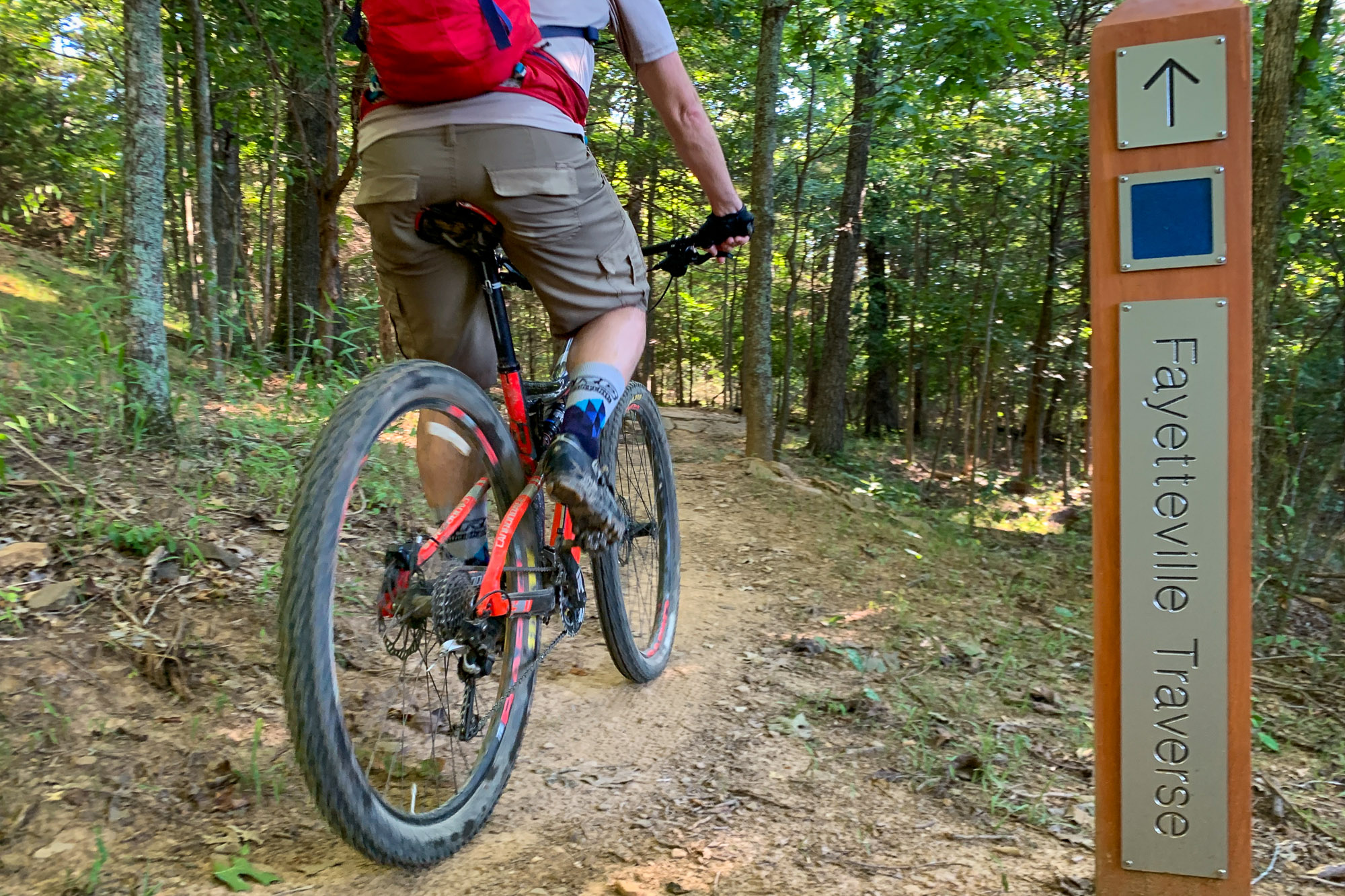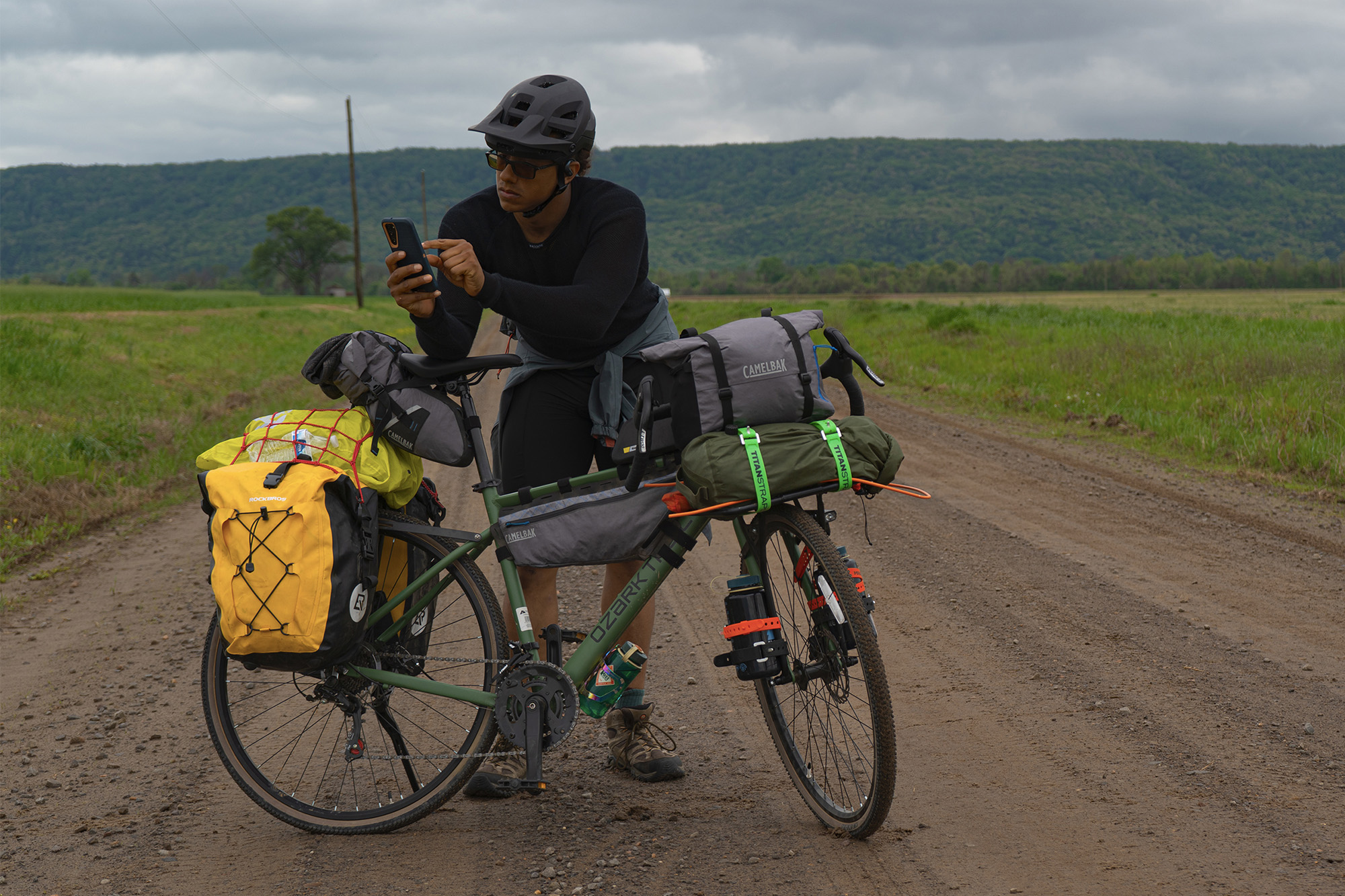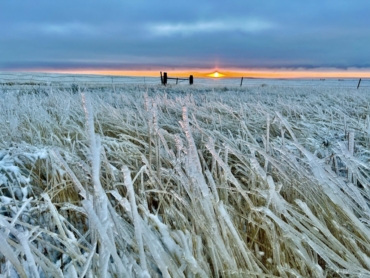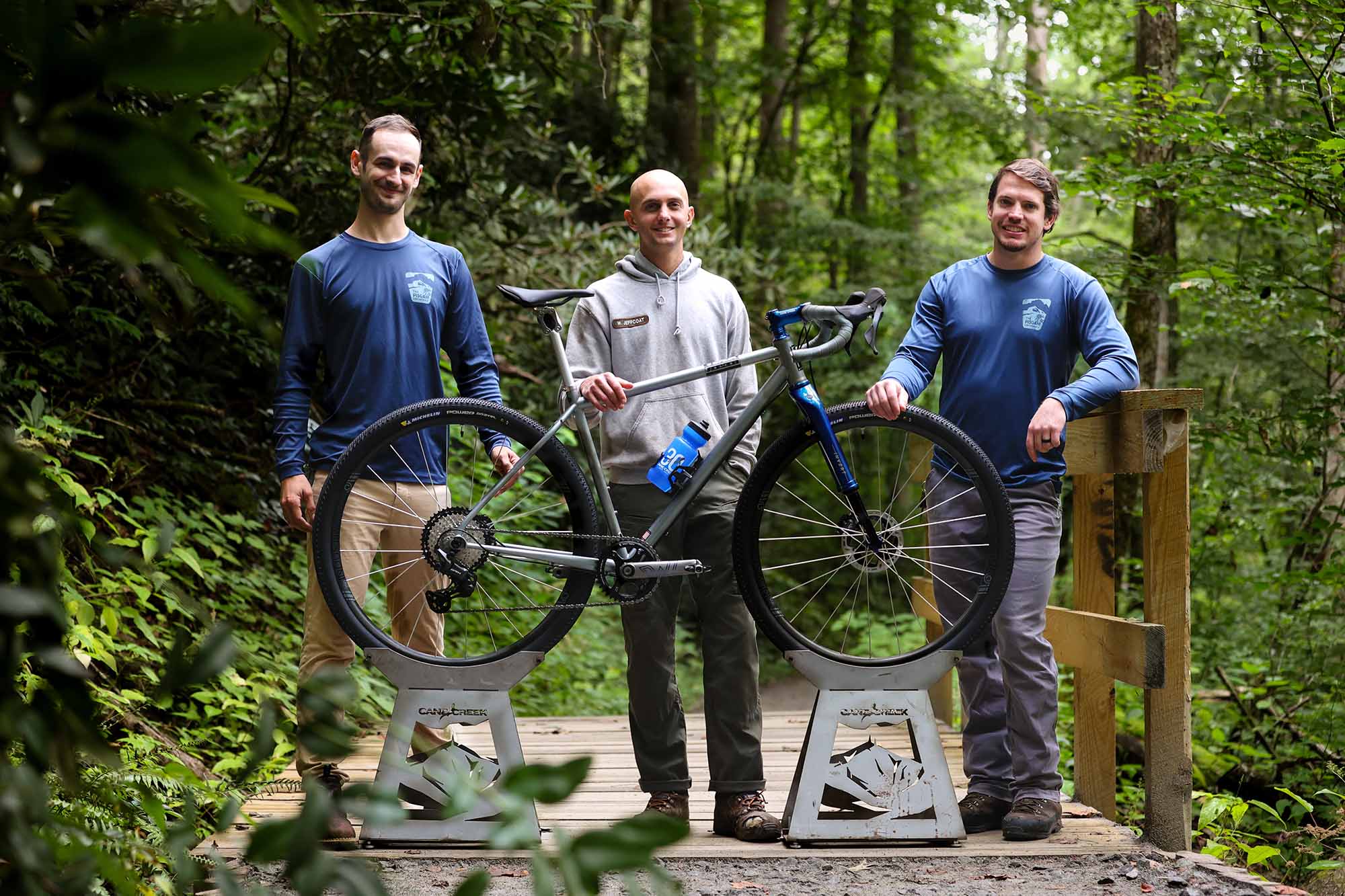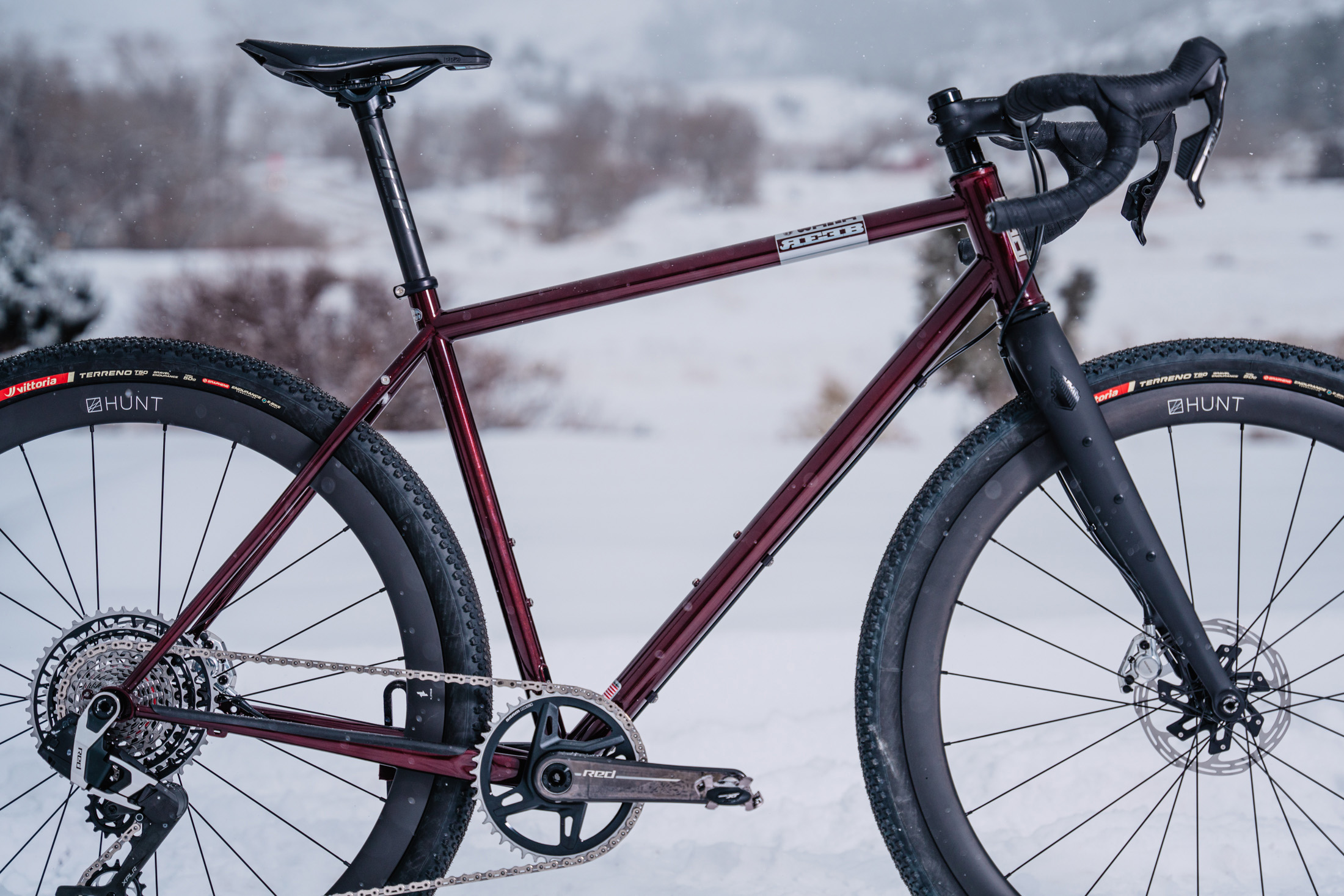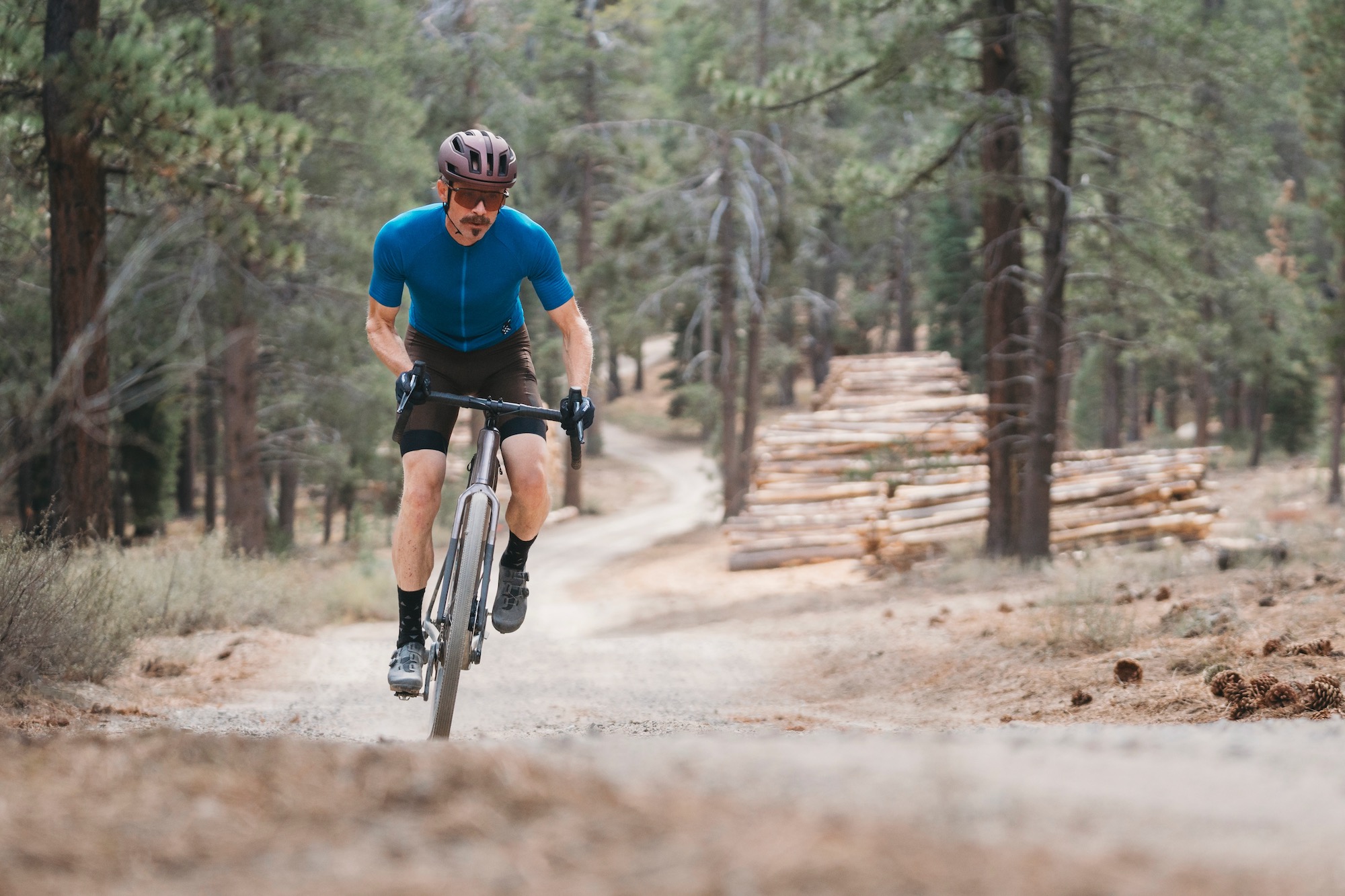Through an entanglement of state projects, investments from Walmart heirs, and a community willing to put pedals to pathways, Bentonville has proclaimed itself as the “Mountain Biking Capital of the World.”
Now, Northwest Arkansas, fittingly known as Oz (short for Ozarks), is capitalizing on that MTB moniker. The Oz is expanding beyond a Bentonville-centric reputation. It’s becoming a hotspot for bikepacking, touring, bikerafting, bike angling, and all things adventure cycling.
Cities such as Fayetteville, Bentonville, and Little Rock have already spent roughly 2 decades investing in bicycle commuting infrastructure and cycling businesses. The next chapter: Pushing a region that’s a hotspot for day trips to MTB parks and rife with options for cycle commuting into the forefront of the bikepacking and touring scene as well.
Fayetteville, in particular, has been working with the nonprofit Bikepacking Roots to map, in detail, nearly 750 miles of bikepacking trails running through the Ozarks. About 30 miles from Walmart’s Bentonville headquarters, I loaded up an Ozark Trails bike to see for myself. The plan was to ride the Walmart bike from Fayetteville to Little Rock to sample the rising hub for adventure cycling.
The Walmart Connection vs. Arkansas Contributions
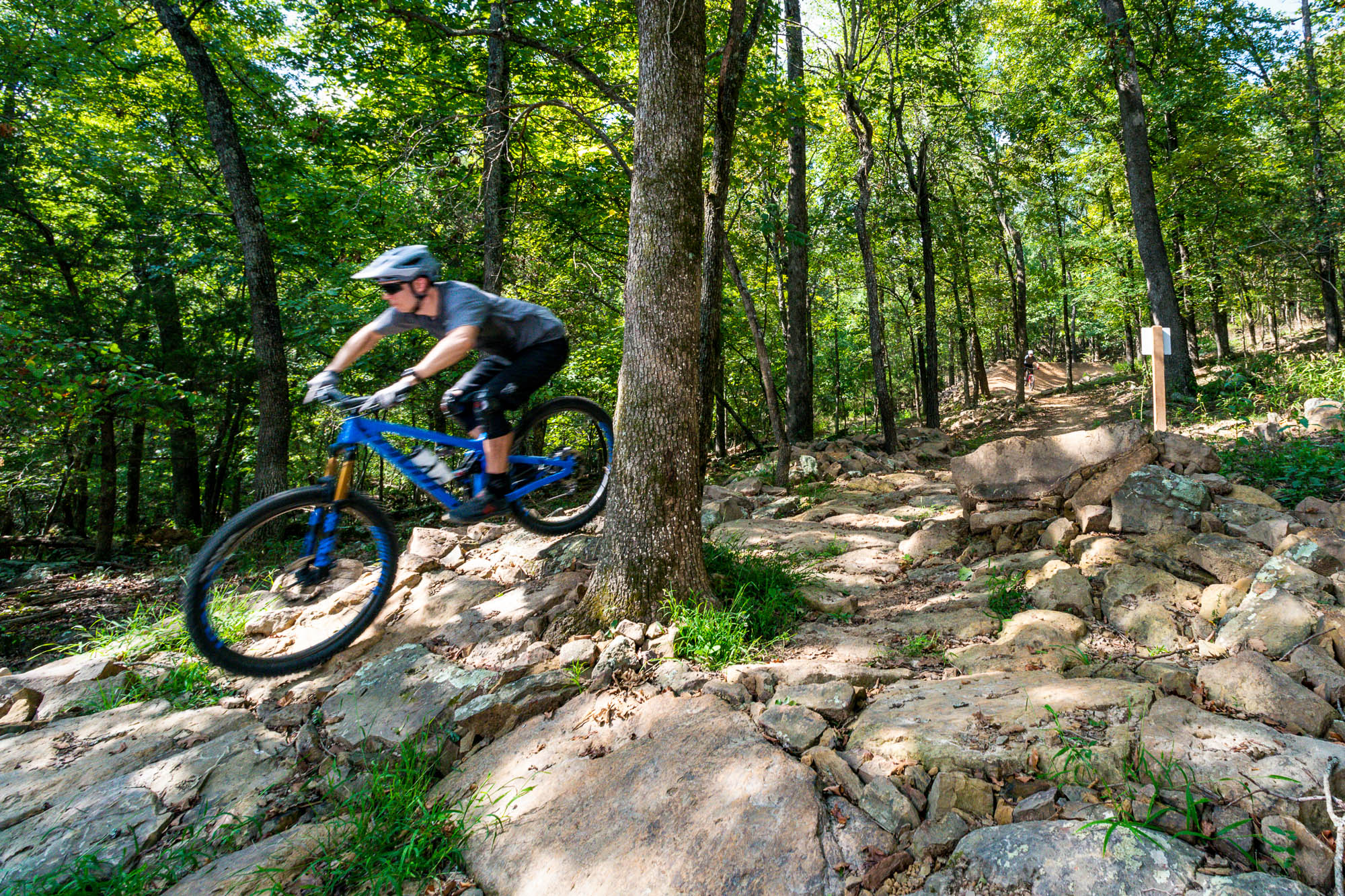
Oz’s MTB reputation often gets chalked up to Walmart’s Walton Foundation pumping some $85 million into MTB parks and infrastructure around its Bentonville headquarters. This has Bentonville on the receiving end of accusations of being a “fake” mountain bike capital.
The reality is more complex. The Walton family has been a passionate force for MTB promotion. Indeed, testing the company’s Ozark Trail bikes on actual Ozark trails is what brought me to Oz. However, Walmart’s mountain biking contributions have been more than matched in promotion by Arkansas itself.
Oz has invested heavily in trails. Last year, nonprofit cycling advocacy group Trailblazers estimated that Benton, Washington, Carroll, Newton, and Madison counties had constructed 565 miles of soft-surface trails and 206 miles of paved trails.
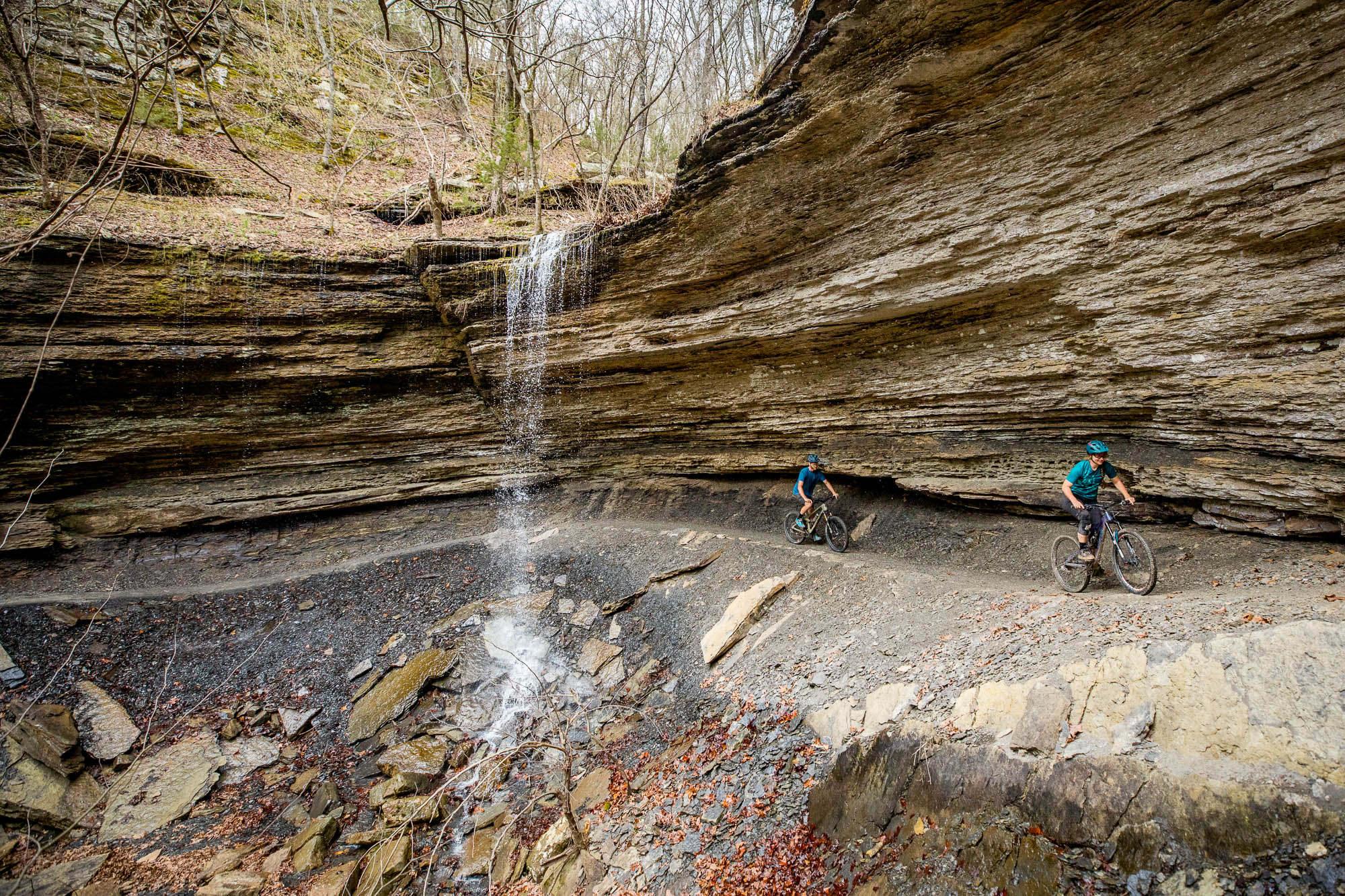
Arkansas has also worked with the National Interscholastic Cycling Association to establish more than 30 student mountain bike racing teams. Nearly 1,000 athletes participate, over half from Northwest Arkansas, according to Brannon Pack, director of cycling tourism at Experience Fayetteville.
I saw many such student-athletes on my second day in Fayetteville back in March. I had the distinct pleasure of having kids 13 years my junior blow past me on their way to the starting line at the MTB Pro Cup as I pushed my bikepacking rig up the hill to Fayetteville’s Centennial Park.
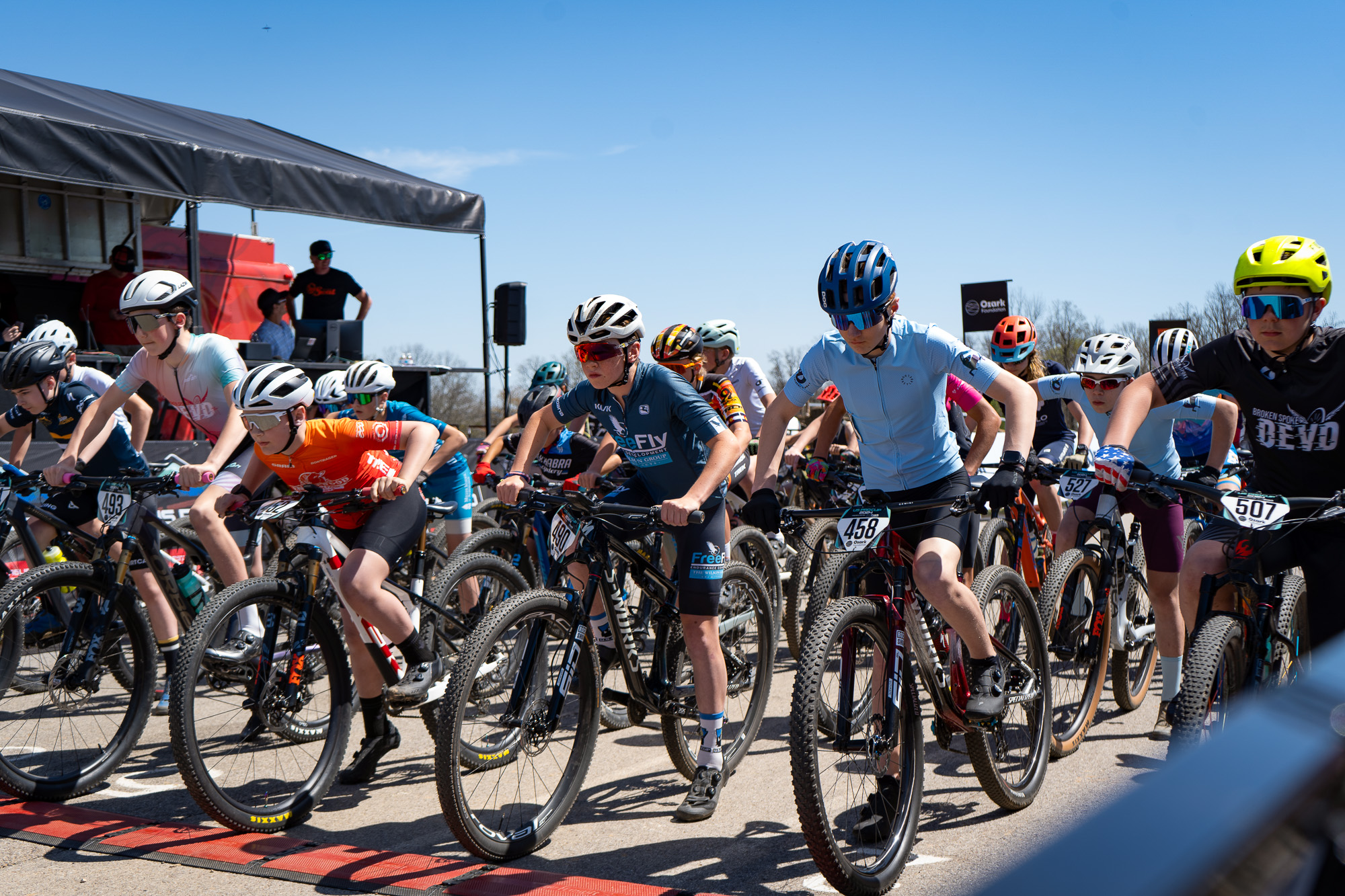
Built for the 2021 UCI Cyclo-Cross World Cup, Centennial is one of many MTB and cyclocross parks throughout Oz. It hosts bike festivals, amateur races, and pro events alike.
Even with one week and no rental car, one could easily hit a dozen parks offering a wide range of skill-level trails across Ozark country spanning from Bentonville to Devil’s Den State Park — and likely catch a festival or racing event along the way.
Northwest Arkansas Cycling: The Wilderness, but With City Comforts

My ideal bikepacking and touring trips have an ebb and flow. Give me 2-6-day stretches in a wild country with starry skies. Preferably, give me trees to hang a hammock. And give me some water where I can drop a line and convince myself that I can catch fish.
After long trail days, though, give my melanated hair a hot shower and a comb. My back wants a warm bed, my stomach a well-made burger, and my soul a proper Old Fashioned.
If you’re like me, Oz is a primo pick for bikepacking. On the trail, water is never a far ride. Every direction leads to some of the country’s best smallmouth bass fishing. Hammocking is a breeze. Dark Sky Parks, like White Rock Mountain, where I camped to view the eclipse, are plentiful.
In larger cities, Oz offers numerous amenities for passing cyclists. You’re in the heart of bourbon country, surrounded by great grills, bike shops, and bike-friendly lodging.
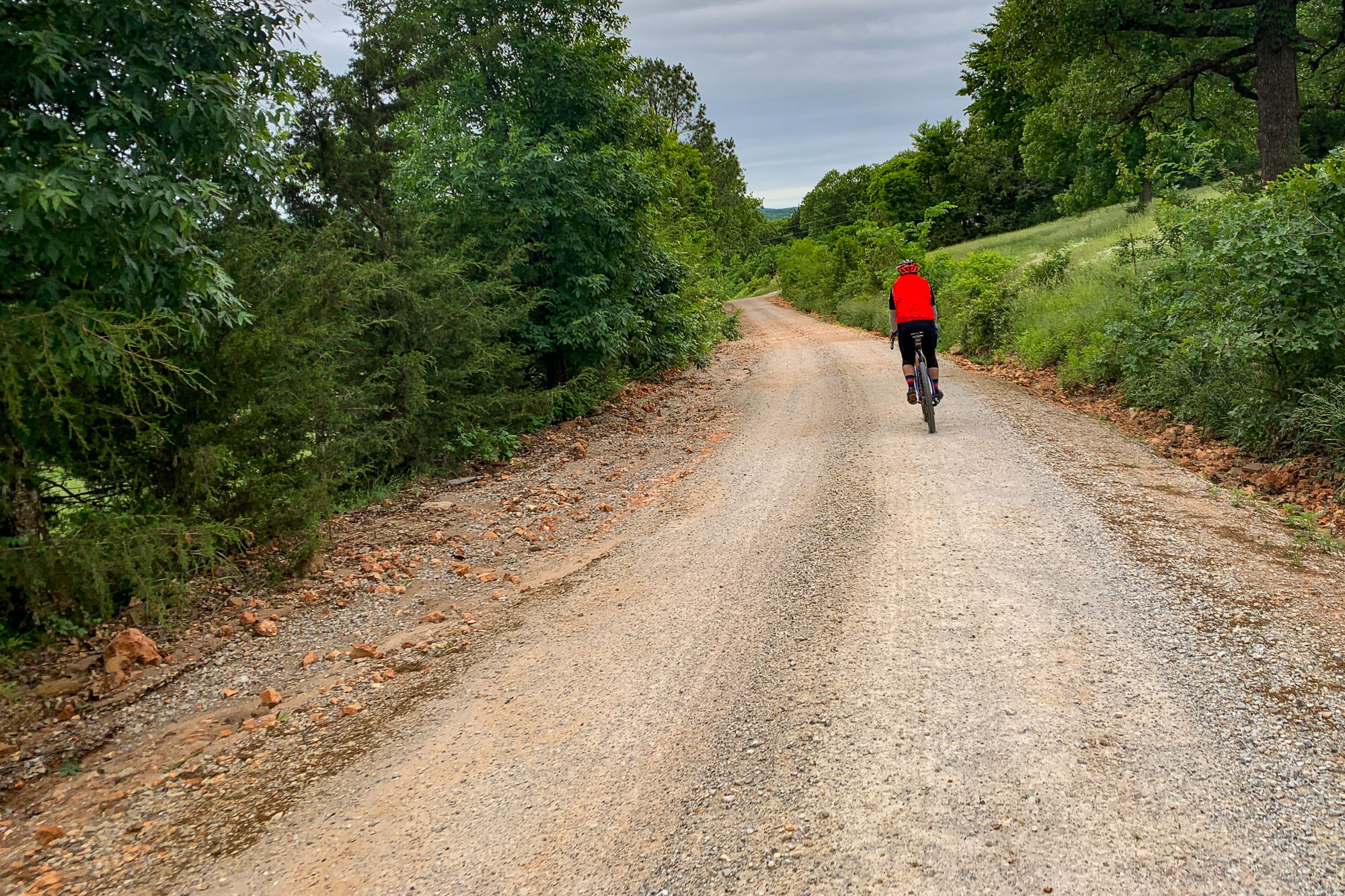
I rode along the Razorback Greenway, the 40-mile main trail finalized in 2015 to span Bentonville and Fayetteville. I ran across trailside bars, cyclist-oriented restaurants, bike shops, and bike-friendly lodging.
The lobby of my hotel was rife with cyclists, here to see the Pro Cup, wheeling bikes in and out. On my first night exploring the town, the Greenway brought me to a nearly century-old bar called George’s. It’s Arkansas’ oldest living (and I do mean “living”) music venue.
When I needed an extra tube, it was a mile from Fayetteville’s hotel hub and a Phat Tire bike shop. I was quickly back on two wheels and getting brunch at a trailside restaurant called Nomad’s. It was decked out with cycling signs and painted bicycles.
All in all, before I left town for wilderness trails, I was able to check out a basement burger joint, a rooftop restaurant, a bank vault bar, and an apothecary/gin joint concert. Not one of them was more than a stone’s throw from a trail or bike lane.
It’s no wonder that Bentonville and Fayetteville’s cycling greenways and bike-friendly businesses have earned them silver and gold Bicycle Friendliness designations, respectively, from the League of American Bicyclists.
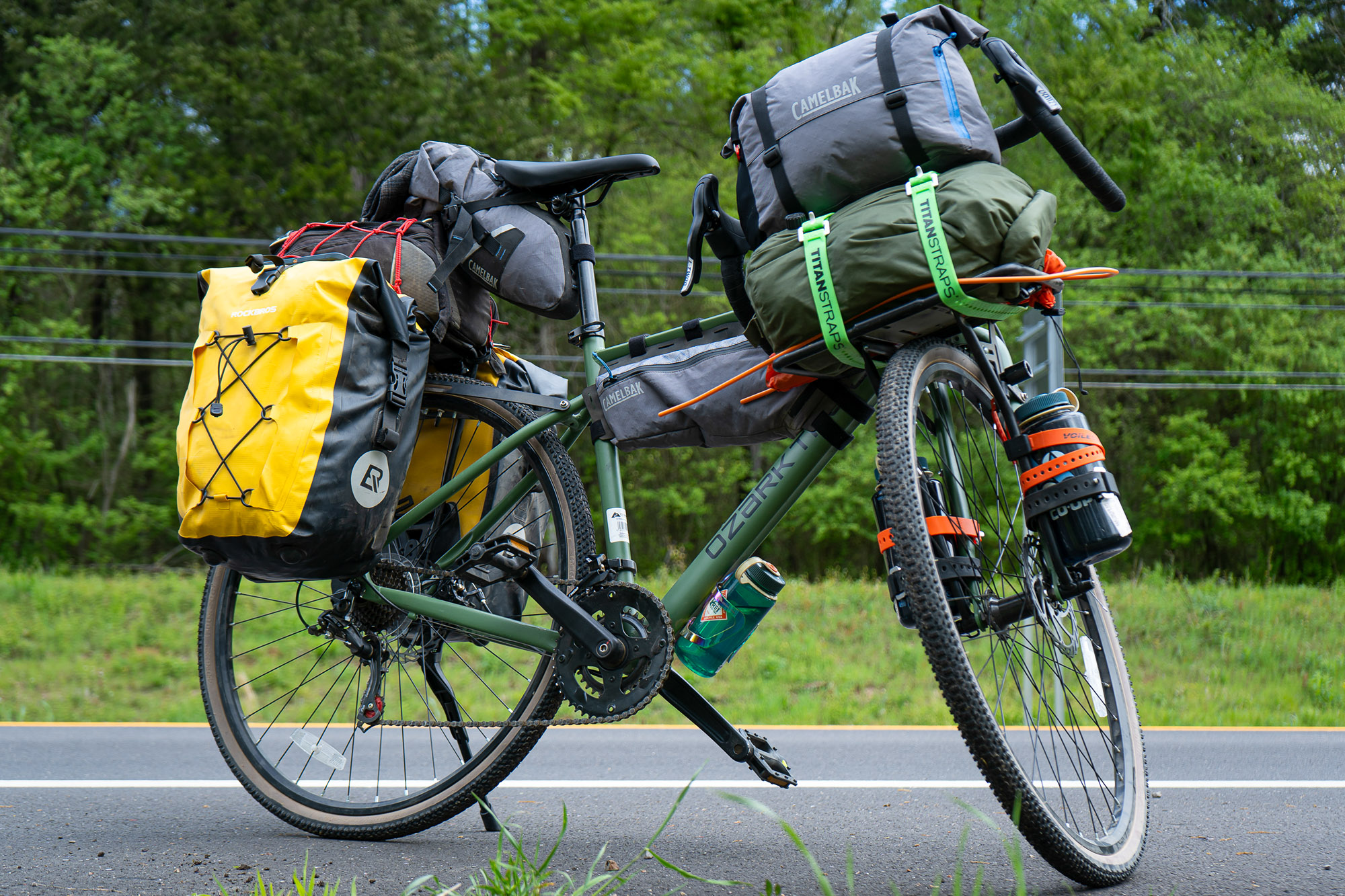
The twin cities aren’t alone. Several cities throughout Oz are propagating a grassroots cycling culture. Fort Smith is undertaking efforts to expand bike share programs in lower-income communities. According to the nonprofit People for Bikes, Bella Vista ranks among the top 15% of most bike-friendly cities.
I planned my route to end in Little Rock because of its Amtrak station, which made it easy to travel with a bike. When an unexpected delay kept me Arkansas-bound for a few extra days, it was easy to find bike-friendly lodging. (Being a firefighter, the obvious choice was Little Rock’s Firehouse Museum/Hostel, which offers free-to-use bikes and an indoor rack.)
Little Rock also boasts numerous commuter lanes, a bikeable dining scene, and a number of beautiful trails and parks. It plans to expand its trails, which begs the question: How were the new trails I came to test ride?
Northwest Arkansas: Next Chapter Trails
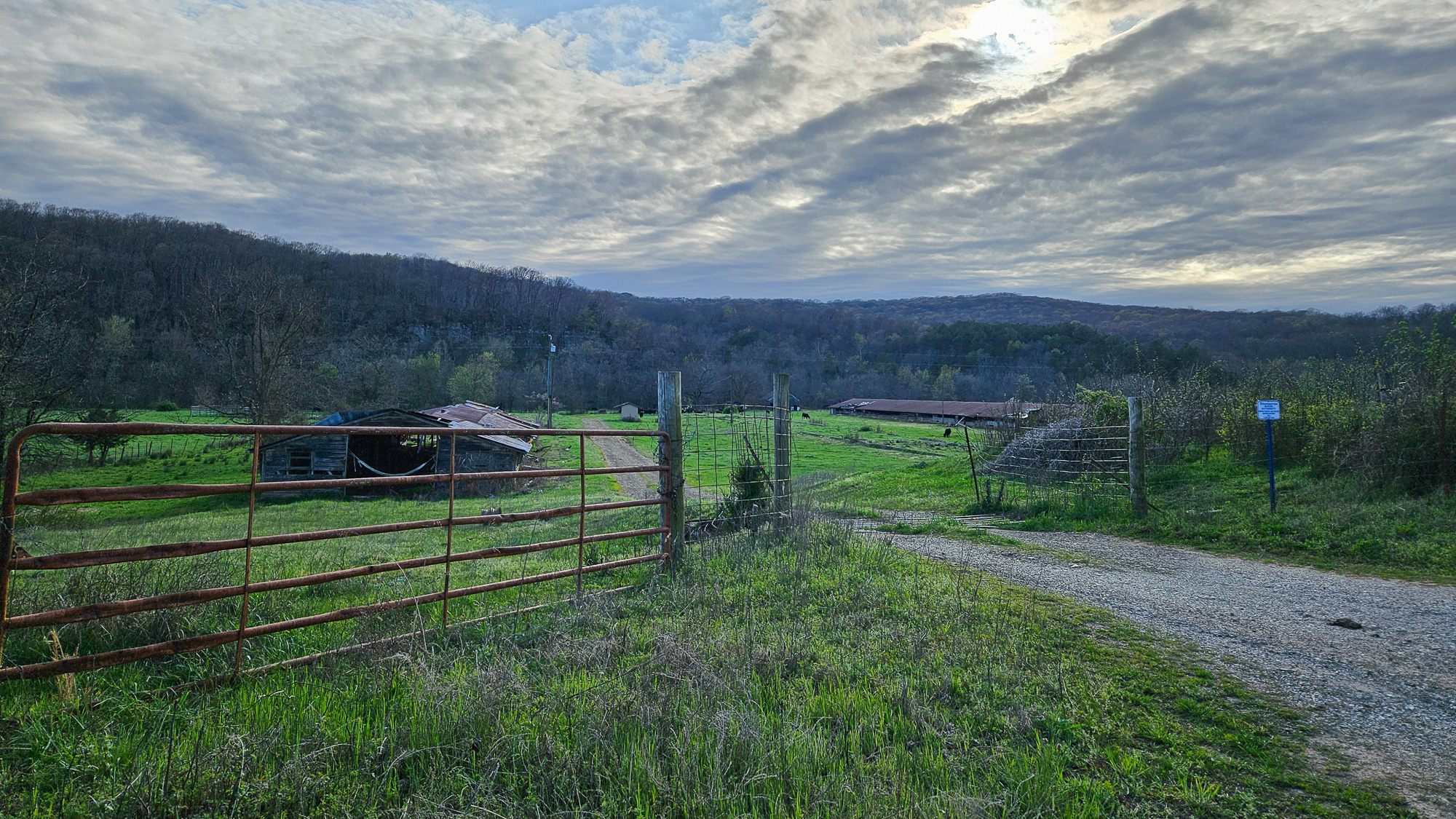
Fayetteville and Bikepacking Roots are leading the charge in charting the next chapter of Oz as a hub for multiday adventure cycling trips. Experience Fayetteville and Bikepacking Roots invited me to test ride any one of the half-dozen new routes running for nearly 750 miles, largely through the Ozarks.
My checklist included smallmouth fishing, eclipse viewing, bourbon-based bar crawling, and crossing the Ozarks from Fayetteville to Little Rock. They had a route for me. The game plan was to ride 50-odd miles along its Boston Mountain Route. Then, I would swerve onto the Ozarks connector route. Finally, I would peel off around 30 miles down to cover the final 150 miles to Little Rock.
It wasn’t the first time I had to rework my route at the last minute. It was, however, the easiest. Even in the test-riding phase, all of the routes were well-mapped on Ride With GPS. They had campsites, water sources, lodging options, hazards, and alternative shortcuts religiously bookmarked.
Most of the routes run through a mix of paved paths, highway shoulders, and gravel. Although not the most technical terrain, several routes include hilly sections on access roads strewn with golf- to baseball-sized rocks.
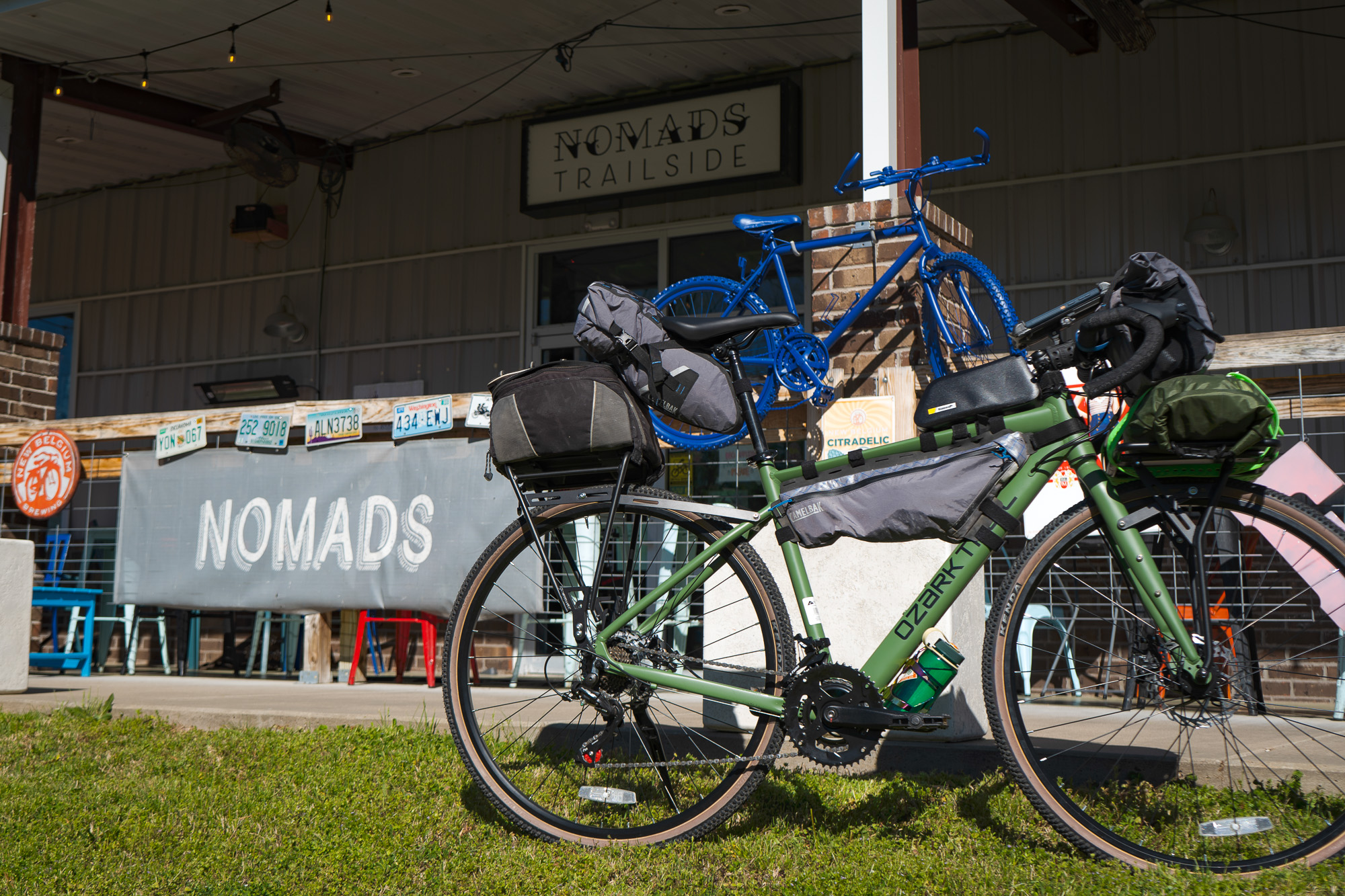
A section of my route near White Rock was particularly challenging for someone with a case of strep throat, a heavy loadout, and narrow tires. Gravel bikes are perfectly suitable for most of the routes. However, I’d advise a nice low granny gear and (preferably tubeless or reinforced) tires more than 45mm wide for routes venturing farther out into the Ozarks, such as the Buffalo River Loop or Tour de Ozarks.
Fortunately, the new routes cover a gamut of difficulty levels. Want four walls, a bed, and restaurant dining? The Razorback Greenway offers 1-2-day pedals along paved greenways and quiet pastoral roads. It traverses an area rife with options for MTB day trip excursions.
The Boston Mountain Loops is a middle ground. It offers a diverse 3-4-day ride along 147 miles of challenging pavement, gravel, and rough access roads. The route contains stunning views, excellent fishing, nearly 12,000 feet of gain, and a few alternative shortcuts.
For those who truly want long, challenging wilderness adventures, both the Tour de Ozarks and Buffalo River Loops offer 4-8-day routes with ample vertical gain. Each passes gorgeous views, bike rafting opportunities, numerous fishing spots, more technical terrain, and plentiful options for shortcuts, which is exactly why I’ll be tackling the former later this year.
The Final Word on Northwest Arkansas Cycling
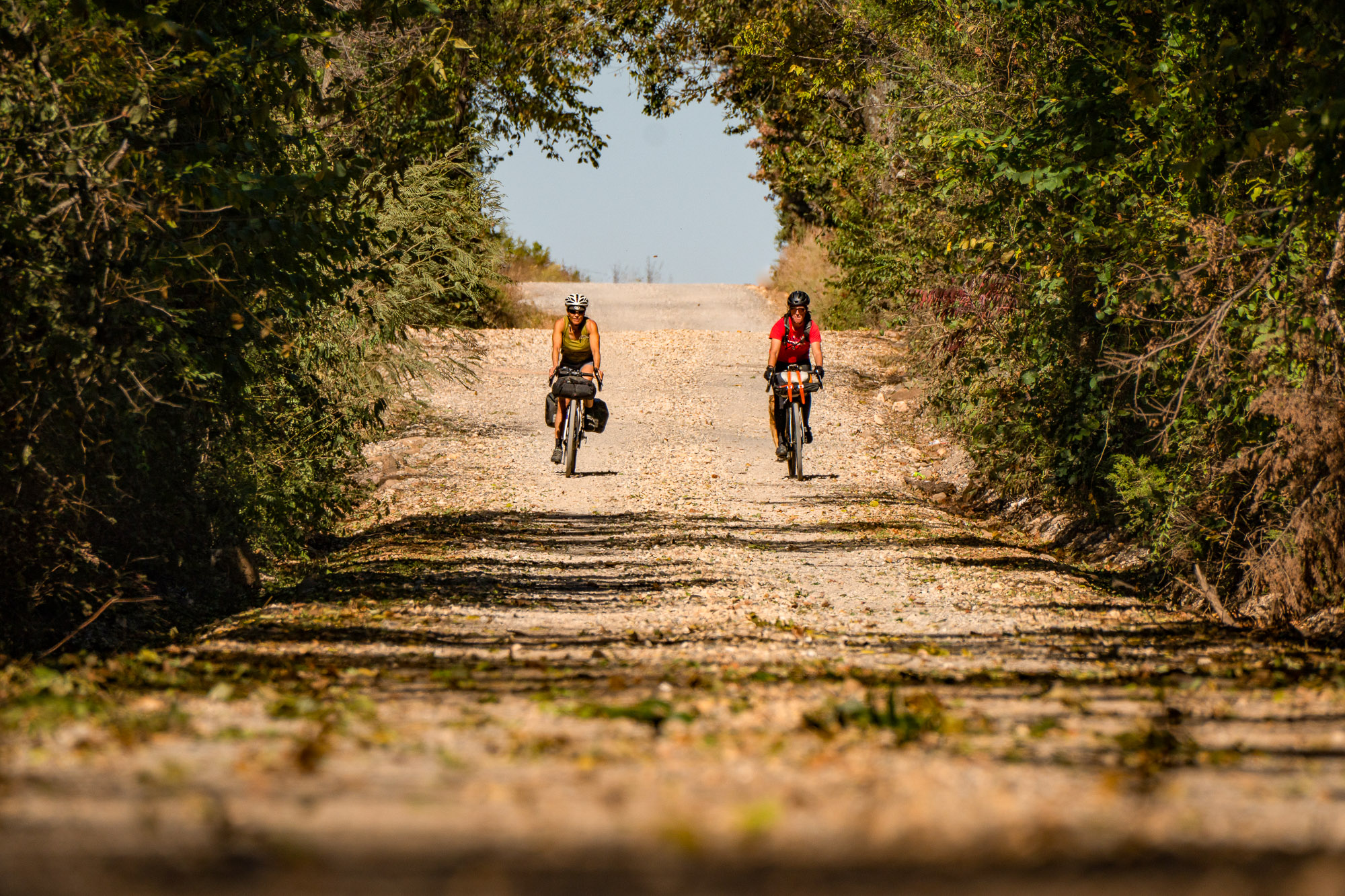
One of the greatest virtues of adventure cycling is its approachability. Like most people, I rarely get enough time off from work to trek 250 miles through the mountains. I can’t afford the fishing boats of my dreams, and a plane ticket and a car rental are major expenses.
Yet, adventure cycling in most of its forms, from touring and bikepacking to bike rafting and fishing, is often regarded as the domain of either Western or Appalachian countries.
As a cardholding citizen of both the South and Midwest, I might be a bit biased. But Northwest Arkansas is big news to me. Oz already has ample mountain bike opportunities. It offers numerous incredible fishing, rafting, and hiking opportunities. Its cities tend to offer navigable bikeways, vibrant dining scenes, and more cost-effective lodging, food, and rentals.
You don’t have to buy the hype behind “The Mountain Bike Capitol of the World.” But if you don’t buy a ticket to Northwest Arkansas for your next big bikepacking or touring adventure, you’ll be missing an incredible opportunity.
